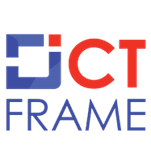OWASP Unveils AI Testing Guide (AITG): Securing AI Systems from Unique Vulnerabilities
25th June 2025, Kathmandu
The Open Web Application Security Project (OWASP) has launched a groundbreaking initiative with the unveiling of its AI Testing Guide (AITG). This comprehensive framework is specifically designed to tackle the rapidly evolving security threats inherent in artificial intelligence (AI) systems across various industries.
OWASP AI Testing Guide
The AITG aims to be an indispensable resource for software developers, architects, data scientists, researchers, and risk officers, offering a structured methodology to identify and manage AI-related risks through systematic testing.
Led by security veterans Matteo Meucci and Marco Morana, the OWASP AI Testing Guide is notable for its technology-agnostic approach, making it suitable for a wide spectrum of AI applications. It supports all key stakeholders—including developers, data scientists, architects, and risk managers—through every phase of the AI development lifecycle. Furthermore, the AITG promotes structured documentation practices, which are crucial for organizations to demonstrate due diligence, meet regulatory compliance standards, and reinforce trust in their AI systems.
The Critical Importance of AI Testing
As AI increasingly underpins essential decisions and operations in critical sectors like healthcare, finance, automotive, and cybersecurity, robust testing becomes paramount. Ensuring the trustworthiness of AI systems demands testing that extends beyond basic functionality. It must encompass the validation of fairness mechanisms to prevent bias, evaluate robustness against adversarial attacks, and assess security risks such as data leakage, model extraction, and poisoning.
Techniques like differential privacy play a vital role in enforcing data protection regulations and safeguarding individual records. A comprehensive testing approach is indispensable for exposing hidden risks and maintaining public and organizational trust in AI-driven technologies.
What Makes AI Testing Unique?
Unlike conventional software, AI systems, particularly those powered by machine learning, exhibit non-deterministic behavior. Variability in training and inference leads to probabilistic outputs, necessitating specialized tests that account for expected variations. AI models are also heavily reliant on the quality and distribution of their training data. Unforeseen changes in data, known as “data drift,” can silently degrade performance, making continuous validation of both data and outputs essential.
Data-centric testing is crucial to ensure consistent, fair, and accurate model behavior. The presence of bias in training data can lead to discriminatory results, making fairness evaluations and mitigation strategies an integral part of the test plan, a significant departure from conventional QA. Additionally, the inherent opacity of many AI models, such as deep neural networks, complicates explainability and verification processes.
Adversarial testing is equally indispensable. AI models are susceptible to manipulation through carefully crafted inputs, making robustness testing against such attacks critical for maintaining reliability and integrity. Given that AI operates in dynamic environments, continuous monitoring and automated re-validation are vital for detecting model drift, emerging biases, and new vulnerabilities over time.
Purpose and Scope of the OWASP AI Testing Guide
The OWASP AI Testing Guide provides a detailed framework for addressing AI risks throughout the entire development lifecycle. It is specifically tailored for software developers, architects, data scientists, security analysts, and risk managers. The guide outlines a structured suite of tests, including:
Data validation: Ensuring the integrity and quality of training and input data.
Fairness assessments: Identifying and mitigating biases in AI models.
Adversarial robustness: Evaluating the AI’s resilience against malicious attacks.
Continuous monitoring: Tracking performance, detecting drift, and identifying new vulnerabilities over time.
By adopting this guide, development teams can build the confidence needed to deploy AI systems responsibly, ensuring that potential biases, vulnerabilities, and performance issues are identified and addressed before they impact users or operations.
Key Highlights of the AITG:
AI-Centric Vulnerability Detection: The AITG identifies threats often overlooked by conventional security tools, such as prompt injection, model poisoning, and adversarial attacks that exploit machine learning models in production.
Testing for AI’s Unique Characteristics: It introduces methodologies for analyzing non-deterministic behavior, monitoring data drift, and detecting bias in machine learning systems—challenges inherent to AI environments.
Adversarial Robustness and Privacy Focus: A core emphasis is placed on adversarial robustness testing, evaluating AI resilience against manipulated inputs designed to disrupt or deceive the model. It also incorporates differential privacy measures to protect user data without compromising model performance.
Continuous Monitoring and Bias Mitigation: Unlike traditional systems, AI models can silently degrade as data distributions shift. The guide outlines continuous monitoring protocols, fairness assessments, and bias mitigation strategies to maintain long-term performance and equity.
AI-Specific Penetration Testing: Security professionals gain access to tailored penetration testing techniques, such as membership inference, model extraction, and prompt injection testing—especially relevant for large language models.
A Complement to Existing Frameworks
The OWASP AI Testing Guide is designed to seamlessly integrate with established OWASP resources like the Web Security Testing Guide (WSTG) and Mobile Security Testing Guide (MSTG). Its unique focus lies in addressing threats specific to AI and neural networks, providing a specialized layer of security assessment.
About OWASP
The Open Web Application Security Project (OWASP) is a global non-profit organization dedicated to enhancing web application security. A cornerstone of OWASP’s philosophy is the free availability and easy accessibility of all its resources through its website, empowering individuals and organizations to strengthen their security practices. OWASP provides a wide array of materials, including documentation, tools, videos, and community forums. Among its most recognized initiatives is the OWASP Top 10, a widely acknowledged list of the most critical web application security risks.
For more: OWASP AI Testing Guide








